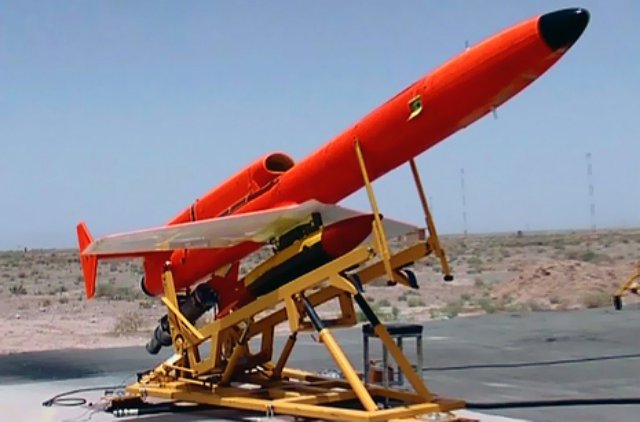 Iran’s Karrar
Iran’s Karrar
Military sources say that Iran has begun to harass the ground-based air defences of the U.S. Army and allies in the Persian Gulf region using swarms of unmanned aircraft.
The aircraft, which appear to be of Chinese design or origin, are typically launched to exploit the operating pattern of U.S. radars. They can fly beneath or around the limited coverage area of radars currently deployed in neighbouring states, and their flight characteristics make them difficult to classify. On at least one occasion, they were mistaken for birds because of their slow speed and small radar cross section.
Iran has long been known to operate anti-ship cruise missiles of Chinese and Russian origin, and on occasion has threatened to use them to close the strategic Strait of Hormuz through which much of the world’s oil is transported. The new threat may be an outgrowth of Iran’s relations with nations possessing advanced cruise-missile technology, however it raises difficult questions for the U.S. Army. Over the last two years, Army leaders decided to cancel several next-generation air defence programmes because anticipated threats from cruise missiles and other airborne systems had not materialized as expected.
Now those same leaders are beginning to consider the vulnerabilities that might result if the Iranian military sought to weaponize unmanned air systems and use them to attack high-value assets such as satellite ground stations. That possibility puts Iran’s recent swarming tactics in the category of what the military calls “asymmetric” warfare, because they exploit known weaknesses in U.S. and allied defences. The unmanned air systems that Iran is using are relatively simple, but because their operators employ them in sophisticated ways to exploit certain deficiencies of U.S. air defences, they potentially pose a major danger.
The aircraft can easily be intercepted and shot down once they are detected using attack helicopters or fixed-wing aircraft. What worries local commanders is that they might not be detected in a timely fashion, or might be launched in such large numbers that they overwhelm the limited capabilities of defenders. Military sources say that the same tactics can be employed by other adversaries such as China, and that the ground-based radars U.S. defenders currently rely on lack the sensitivity and coverage area to cope with the emerging threat.
Source: Defence Professionals
